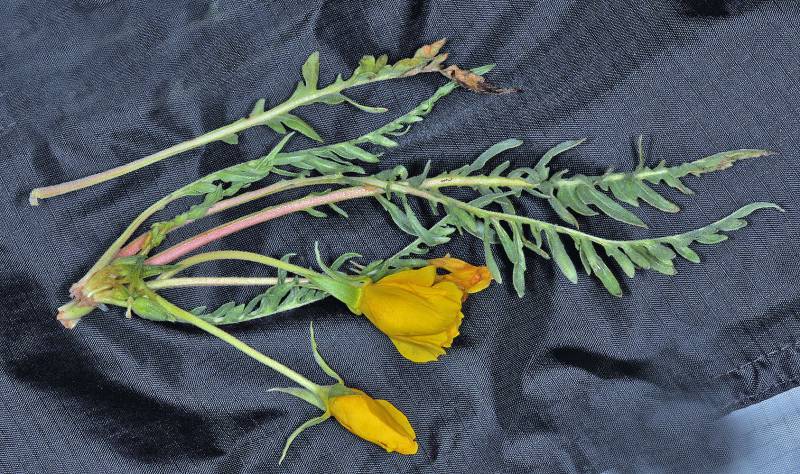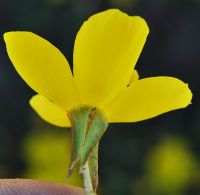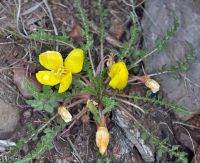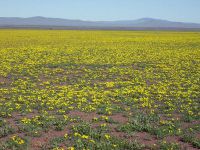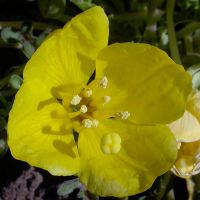Distribution: Occurring east of the Cascades crest in Washington; Washington to California, east to Idaho and Nevada
Habitat: Dry, often sandy or gravelly ground, low to moderate elevations
Flowers: June-August
Origin: Native
Growth Duration: Perennial
Conservation Status: Not of concern
Pollination: Bees
Tufted, acaulescent perennial from deep, branching rhizomes, forming large patches, grayish with fine hairs.
Leaves all basal, 5-20 cm. long and 1-3.5 cm. broad, the blades narrowly to broadly lanceolate to oblanceolate, deeply wavy-margined, narrowed to slender petioles half as long to nearly as long as the blades.
Flowers solitary and sessile; calyx tube filiform, 2.5-9 cm. long, the flared upper portion 2-3.5 mm. long; the 4 lobes reflexed, distinct; petals yellow, aging to purplish, 10-16 mm. long, stamens 8, unequal, the longer ones about half the length of the petals; style equal to the petals, stigma globose; ovary inferior, 4-celled.
Capsule 15-20 mm. long, leathery, oblong-ovoid, 4-sided and slightly winged.
Publication: Contr. U.S. Natl. Herb. 11: 405. 1906.
Camissonia tanacetifolia (Torr. & A. Gray) P.H. Raven ssp. tanacetifolia [JPM2]
Oenothera tanacetifolia Torr. & A. Gray [HC]
PNW Herbaria: Specimen records of Taraxia tanacetifolia in the Consortium of Pacific Northwest Herbaria database
WA Flora Checklist: Taraxia tanacetifolia checklist entry
OregonFlora: Taraxia tanacetifolia information
E-Flora BC: Taraxia tanacetifolia atlas page
CalPhotos: Taraxia tanacetifolia photos



